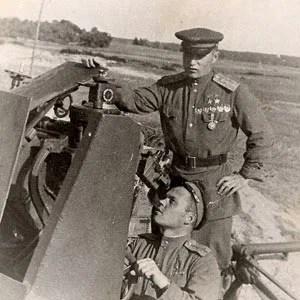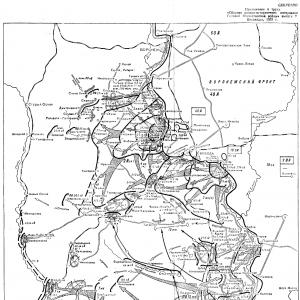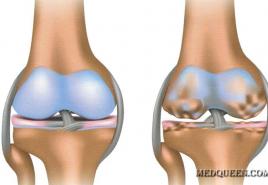Italian fashion houses. Italian fashion designers - from Salvatore Ferragamo to Franco Moschino. Italian fashion provides even desperate workaholics with the opportunity to fall in love with life, their appearance and the world around them
Whose eyes widen with envy when they find out that many brands come from Italy? Italian designers and fashion are truly one of the things that Italy can be proud of. It occupies a strong position in the world: Italian designers are chosen by many celebrity stylists.
Below you will find a list of the ten most famous and largest Italian fashion brands in the world.
Prada
It is impossible not to immediately think of the empire founded in the late 80s by Miuccia Prada and Patrizio Bertelli, when they saved the family business of a Milanese stylist, and already in 1988 Prada became synonymous with experimentation and reinterpretation of classics and traditions. Thanks to Miuccia Prada, ugly chic was born, copied by many (in her style).
Armani

The king of Italian fashion, Giorgio Armani, devoted 40 years to his own brand. The Armani fashion house, which began its history in 1975, is associated with the fashion life of the 80s and 90s.
Valentino

Valentino's red color, the concept of fashion that pushes boundaries, celebrating the highest style, elegance ahead of its time: Valentino Garavani (1932) founded the brand in 1957 and just a few years later built a stellar career as a fashion designer, ending in 2007 with his resignation as creative director. 50 years of dreams that would be impossible to imagine if he were not with us.
Gucci

The luxury empire was a Florentine leather workshop, changing creative directors and directions. The brand's constant products have always been accessories and bags - objects of cult for fans of quality leather goods.
Versace

Gianni Versace suffered a difficult fate, but he gave the world his brand, run by his sister Donatella, a brand that one cannot help but love: from the lush creativity with which Gianni began, to the sensual femininity - the Versace brand is ready to conquer the Hollywood stage.
Dolce & Gabbana

Always ready to argue about creativity and social policy, Domenico Dolce and Stefano Gabbana capture the spirit of southern Italy. Recognized as fashion maestros, not without a bit of impudence and audacity, manifested, in particular, in women's collections.
Roberto Cavalli

Animal themes, prints, patches are the three main features of Roberto Cavalli, which are still present in the items of the brand, founded back in the 60s by the Florentine fashion designer. In the 90s, with the support of his second wife, Eva Dühringer, Cavalli took the decisive step to the world level.
Emilio Pucci

The fashion industry of the Florentine Marquis Emilio Pucci was born almost by accident in 1950 in Capri, where the stylist created hats characterized by the practicality and color freshness that was at the height of fashion at the time, but with drapery. A pioneer of Italian fashion, he created sportswear.
Moschino

Franco Moschino is a giant of Italian fashion. He, like Versace, left very early (in 1994). His creative concept, daring and ironic without boundaries, still has no real heirs. However, the brand was transferred to the hands of the American Jeremy Scott.
Max Mara

The Maramotti group from Reggio Emilia means one thing: moderate elegance. This is the basic principle of a fashion house, a camel coat, a prototype of sewing genius guarding classics and tradition.
1951 can be called the official year of birth of Italian haute couture. During fascism, Italian fashion designers initially followed the traditions of French fashion, copying the models of French designers. The leading fashion designers at that time were Biki, Firchioni, Karaceni. However, in 1935, the Italian Society of Fashion Designers was created, which decides to use only its Italian models and materials in fashion production. After the end of World War II, Giovanni Battista Giorgini began collaborating with one of the American department stores. What was his job? He bought the best clothes from Italian fashion designers to sell in the department store. In order to make his work easier, he decided to organize a fashion show in his villa from the best Italian designers of that time. The fashion show, organized by Giorgini, was a stunning success, which resonated far beyond Florence, where the event first took place in 1951. The models of Italian masters demonstrated excellent tailoring skills. Among them it is worth noting Angelo Litrico, Carlo Palazzi, Nino Cerutti and many others, whose names were immediately recognized throughout Italy. And then, thanks to the Cinecita film studio, the capital of Italy, Rome, also became famous. Movie stars from all over the world began to dress by Italian couturiers.
Angelo Litrico and Nino Cerutti

Already in the 70s, Missoni, Ken Scott and Krizia decided to organize mass production of clothing in northern Italy, since the factories were mainly located in this area. Consequently, they decided to hold the model shows now in Milan. northern capital Italy, which now hosts fashion shows by top designers twice a year, has become a trendsetter. But this is very short, but in fact, Italian fashion had to go a long way in order to deserve the title of haute couture...

Angela Missoni, Rosita Missoni, Margherita Missoni
In Italy after the First World War, women, as indeed in all countries, began to demand the right to participate in all spheres of life, including politics. They felt independent, able to build their own lives. Many of them managed the family budget. There was a growing demand for women's products, and post-war advertising was aimed specifically at women. And hence the number of women's magazines has increased.
The magazine Lidel, founded in 1919, was of particular interest to Italian women. It was this magazine that decided to use fashion as a means of developing the aesthetic, cultural and political unity of Italians. These were the first attempts to create Italian fashion, to evoke a sense of pride in our country. In France, there has long been a Syndicate of Haute Couture, which coordinated the activities of not only fashion designers and tailors, but also many branches of light industry. France's fashion, art, and economy were all one and the same, while Italy had several diverse regional traditions as well as competing cultural centers.
One of the most active founders of Lidel magazine was Rosa Genoni and Lidia Dozio De Liguoro. Genoni considered fashion an important tool in shaping national culture. Her the main idea was that the fashion world is unthinkable without a national economy. The magazine's leaders understood that government support was needed to coordinate the activities of the fashion industry. The project was promising, but many provinces continued to compete not only with Rome, but also with each other, so the unity that the creators of the magazine spoke about, unfortunately, did not exist. The magazine's founder, Lidia Dosio De Liguoro, supported Rosa Genoni in this regard. She also believed that it was necessary to create a special government agency that would not only normalize the clothing production process, but also stabilize the situation in light industry (the day before there had been a textile strike in Italy). Relations between cities continued to remain in an atmosphere of rivalry, even over which city would be the “headquarters” of Italian fashion. And this, of course, held back and slowed down the entire planned project of the magazine’s founders. Both women were political activists, just with different ideologies. De Liguoro supported the fascist regime in Italy that came in 1922 and continued to fight to strengthen Italian industry. She proposed all sorts of measures that would bring Italian fashion, at least to the pan-European level. The magazine focused on the fact that Italian fabrics are bought by France at ridiculous prices, and returned to Italy in ready-made clothes at prices ten times higher than the prices of fabrics.
Italian fascism, which came to power, built its fashion policy in accordance with the proposals of Genoni, De Liguoro and Albanese, who was one of the main figures in the government organization for coordinating the activities of light industry. Albanese described the plans and objectives of the organization that would later become the National Fashion Organization. But that's later. And at that moment the new organization was never able to develop. ….. The construction of a “new Italy”, the creation of a “new Italian” was actively discussed in society, therefore it was supposed to use fashion to change not only society, but also the people themselves.
In 1927, an exhibition was held in Como where silks were displayed. The famous French couturier Paul Poiret was present at the exhibition. A few months later, a fashion show was held in Venice, where for the first time not only French models, but also Italian ones performed. As a result of the exhibition in Como, the “National Silk Organization” was created, and in the fashion show they saw original and exquisite Italian clothing for the first time. However, competition between cities, especially between Rome, Milan and Turin, continued. Each city had its own famous and worthy masters. But Milan began to take a leading position thanks to the active work of Montano, the owner of the Ventura studio, who put a lot of effort into organizing the exhibition in Como.
In 1932, the Women's Academy was created, which trained mainly teachers. And on its basis, national fashion shows were organized, and then there was a transformation into the “National Fashion Organization”. Sports, cinema and fashion were controlled by the new fascist regime to strengthen a sense of discipline among the people. Movies became a source of inspiration for many tailors who, without having the opportunity to look through a fashion magazine, could get ideas from movies. Sports in Italy were also given great attention, which influenced women's fashion. The tasks of the “Organization of National Fashion” included not only the creation of a “new Italian style”, but also the creation of exports abroad. But still there was some inner feeling of the superiority of French fashion. And many of the famous fashion houses in Italy at that time, “Ventura”, “Sorelle Gori”, “Palmer”, “Testa”, tried to copy French fashion designers so as not to lose rich clients. For example, Margherita Sarfatti, a famous writer at that time who was a friend and biographer of Mussolini, bought outfits only from French couturiers. Her evening dresses were a resounding success, and they were designed by Elsa Schiaparelli. The habit of Italian high society to dress in Paris remained.
Historians consider the official date of the appearance of Italian fashion to be February 25, 1951. On this day, a clothing show was held in Florence, organized by Count Giorgini. But even before this moment, fashion houses existed in Italy.
One of the oldest brands in Italy is the house of Gucci. Its history begins back in 1921. But this house reached its true heyday in 1947. Then, for the first time, a bag with bamboo handles was released; this model is invariably in fashion and recognizable even today.
Then they made signature suede moccasins equipped with metal fasteners, and Jackie Kennedy's signature striped narrow strong fabric for Jackie O shoulder bags (wife of President John F. Kennedy), a Flora silk scarf, loved to be worn by Hollywood actress Grace Kelly. The company has entered the first rank of luxury goods production in the world.
And now the GG sign (the initials of Guccio Gucci - the founder of the house) is a brand sign, a symbol of prestige. Moving with the times, the Gucci house presents on the market of fashion accessories, in addition to bags, a line of perfumes, jewelry, shoes, and even phone cases.
Prada is also one of the oldest Italian brands. The history of this sign began even earlier in 1913 with the opening of a small store selling suitcases and leather goods in Milan. The establishment of this fashion house took place in the 70s. The granddaughter of the founder, Miuccia Prada, became the head of the company and focused on high fashion. She released a sensational collection of backpacks made of waterproof materials in 1985, and a collection of ready-to-wear clothing in 1898. Now there are Prada boutiques all over the world. A bag with this logo is a constant choice for a successful woman.
The rise of the next fashion house to the Olympus of fashion began with winning the hearts of New Yorkers. This is the Brioni house. It was in this house that it was invented modern concept for men's fashion. Since the founding of this brand men's suits from Brioni were intended for men of high society (this suit became the official costume of James Bond). Among the clients at home in different time Famous personalities such as George W. Bush, Luciano Pavorotti, Nelson Mandela, Robert Kennedy, Rudolph Giuliani were present. Now this house also has a line of women's clothing, but is still more focused on men's fashion.
If before the outbreak of World War II, actresses in the United States had not been captivated by the works of designer Salvatore Ferragamo, then the triumph of the Brioni house would not have been so stunning. It was the first fashion house to enter the American market with unique designs in the form of platform sandals and other handmade shoes. Many stars wore shoes from this brand during that period. The daughter and successor of the founder, Giovanna, began producing a clothing line in 1959. At the moment, the name Salvatore Ferragamo is associated not only with exclusive, luxury shoes, but also with lines of bags, glasses, perfumes, silk scarves and clothes for every day.

Against the backdrop of the giants of the fashion industry, young but also prestigious brands are growing. They are very fond of Hollywood stars, and therefore the whole world admires them. Workaholic Giorgio Armani invented the ideal of style and image of stars who walk the “red carpet”. It produces everything: clothes, shoes, haberdashery, perfumes. There is an agreement with L’Oreal, according to which he has a line of very famous perfumes, perfumes and eau de toilette from Armani.
In 1978, another company opened, which very quickly became a leader in the production of sexy outfits that highlight the curves of the female figure - Versace. Its founder was fashion designer Gianni Versace. He died tragically in 1997. Then the company was headed by his sister Donatella. Among the brands from this house there are lines of men's clothing, clothing for Everyday life, accessories, and luxury home furniture. In addition, the company has its own luxury hotel on the coast of Australia. But the most popular product of this brand long years are Sunglasses Versace.
Symbols of fetishism - the black corset, lace, leopard underwear from Dolce & Gabbana, one might say, caused an explosion in the fashion world in the late 80s. The main characteristic features of the outfits from this fashion house were the mixture of not only materials, but also styles, techniques, and even eras. But all the outfits reflect truly Italian elegance. In 1993, 1,500 costumes were produced for Madonna's Girlie Show Tour in record time (two months), with the bulk of the costumes having to be created and finished by hand. Every year this company presents approximately thirteen collections to the public. And in addition to women's and men's clothing, there are various accessories: perfume, jewelry, glasses.
The Braccialini fashion house grew out of a small creative workshop. They made bags with bright and colorful embroideries and floral appliqués. Now it is a manufacturer of lines of women's accessories: wallets, gloves, watches, shoes, glasses, bags. Under this brand, bags of various non-traditional shapes came into fashion - fish, telephones, buses, cars.
Santoni's signature style has remained unchanged over the decades. This brand creates hand-dyed luxury shoes. In total, no more than 700 pairs of such shoes go on sale per year. But the company's interests do not end there. Today they produce, in addition to high-quality shoes, wallets, belts, bags and other leather goods.
The sophistication of Italian fashion masters currently symbolizes excellent taste. Italy has conquered the world's catwalks and people's hearts, becoming a trendsetter in the fashion world.
Did you see a mistake? Select it and press Ctrl+Enter
When using or reprinting material, an active link to the fashion website “site” is required!



Italy is still one of the main fashion centers of the world, and Italian fashion houses have been bringing us unique and brilliant designs for many years. We have prepared for you the ten most influential Italian fashion houses.
1.Versace

Versace was founded by Gianni Versace in 1978.
2. Fendi

Fendi was originally a fur and leather store in Rome. It was founded by Edoardo and Adele Fendi in 1925, and then it became a famous fashion house.
3. Biagiotti

The founder of Biagiotti, now one of the largest fashion houses in Italy, was Laura Biagiotti. She originally intended to become an archaeologist, but instead got hooked on fashion.
4.Valentino

In the 1960s, Valentino Clemente Ludovico Garavani was the undisputed king of fashion. His interest in fashion started at a very early age while he was still studying at primary school.
5. Prada

Prada, founded by Mario Prada and his brother Martino in 1913, began as a leather goods store in Milan.
6. Dolce & Gabbana

Designers Stefano Gabbana and Domenico Dolce joined forces in 1985 to form the Italian fashion house Dolce & Gabbana.
7. Armani

The Armani brand is one of the fastest growing in the world. Giorgio Armani formed his company in 1975, and in the 1980s it was his designs for Hollywood celebrities that catapulted him to international fame.
8. Gucci

The House of Gucci was founded in Florence in 1921 by designer Guccio Gucci. Gucci is now Italy's best-selling brand, operating 278 of its own stores and generating annual sales of almost $5 billion.
9. Max Mara

Max Mara is a fashion house that was founded by Achille Maramotti in 1951. Maramotti was one of the first people to realize that modern technologies production facilities can supply ready-made designer clothing to the general public. The company is still privately owned by the Maramotti family and has more than 2,000 stores worldwide.
10. Etro

Another of the great Italian fashion houses that has remained a family business is Etro, which was founded by Gerolamo "Gimmo" Etro in 1968.







